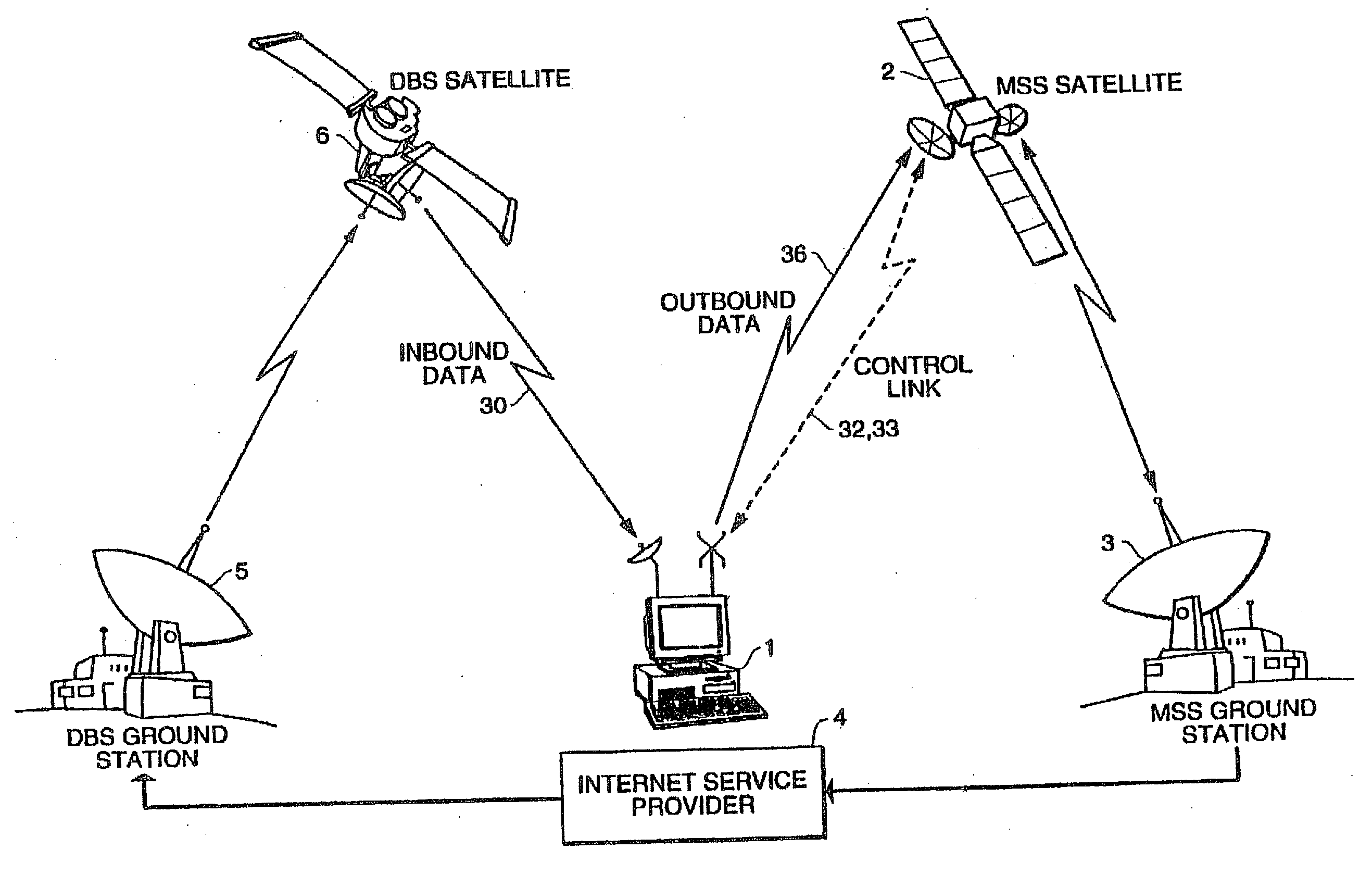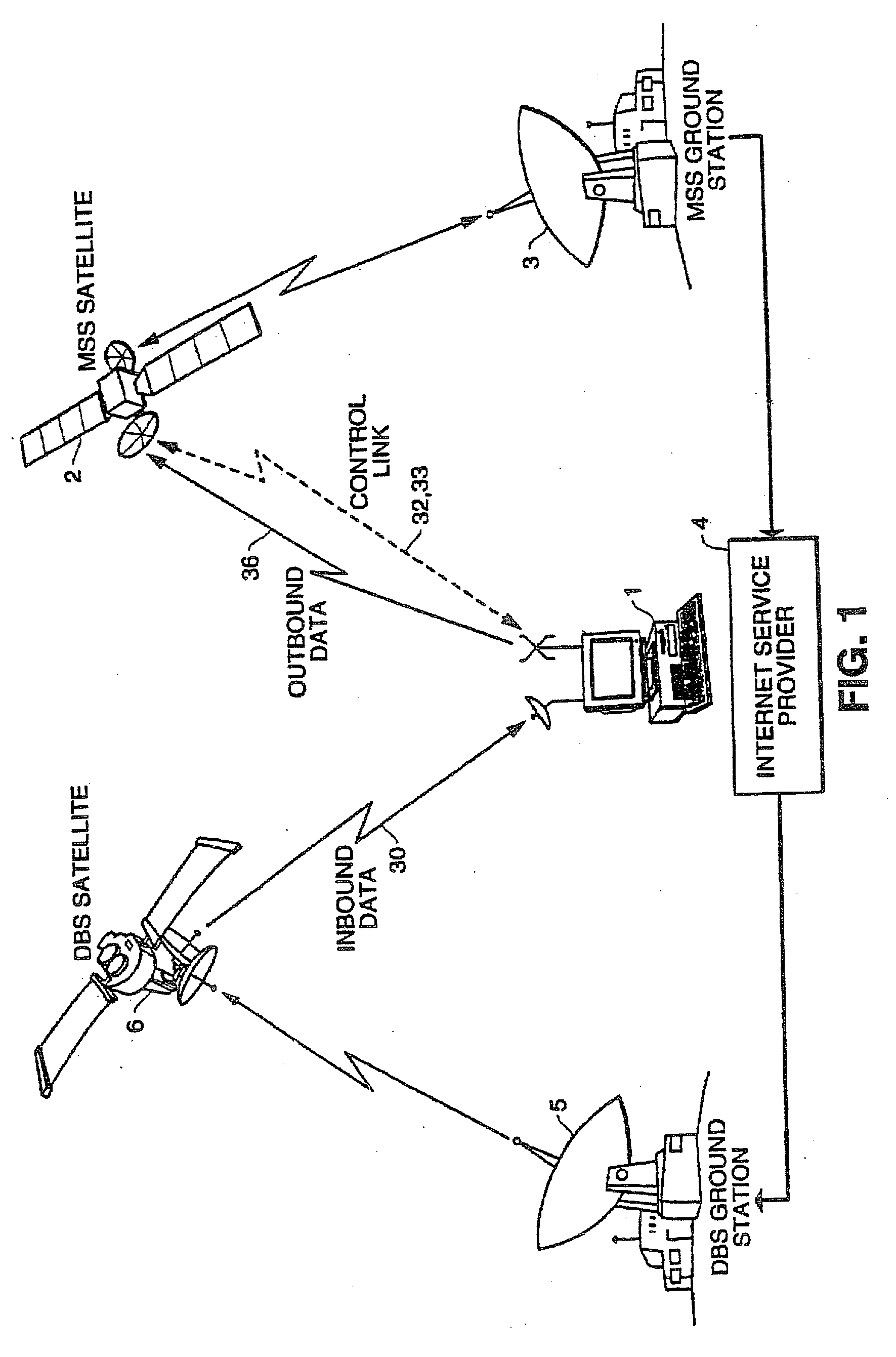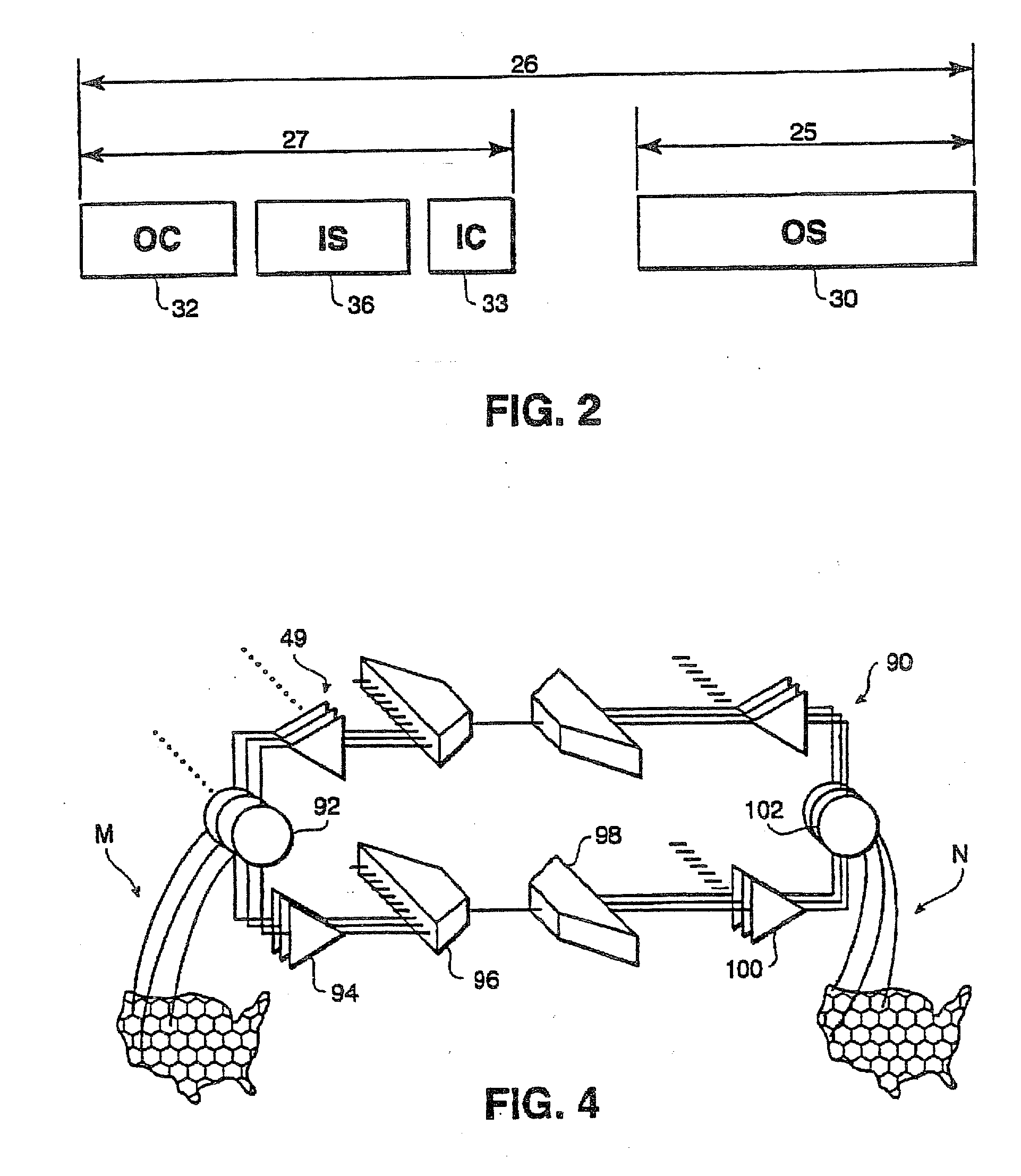Internet communications systems and methods using different wireless links for inbound and outbound data
a technology of inbound and outbound data and internet communication system, applied in the field of satellite communications system, can solve the problems of prohibitively slow transmission rate, inability to meet the needs of users,
- Summary
- Abstract
- Description
- Claims
- Application Information
AI Technical Summary
Benefits of technology
Problems solved by technology
Method used
Image
Examples
Embodiment Construction
[0026] While the present invention is susceptible of embodiment in various forms, there is shown in the drawings and will hereinafter be described the presently preferred embodiments of the invention with the understanding that the present disclosure is to be considered as an exemplification of the invention and is not intended to limit the invention to the specific embodiments illustrated.
[0027] Referring to FIGS. 1-3, the present invention is directed to a hybrid communications system which is particularly adapted to providing Internet service to a computer user. The hybrid satellite communications system includes a plurality of user units 1, each typically including a personal computer, a satellite system and a terrestrial communications system. The satellite system includes a first transceiver 6 for receiving downlinked signals from the terrestrial communications system and for transmitting those downlinked signals to the user's computer 1. The satellite system further includes...
PUM
 Login to View More
Login to View More Abstract
Description
Claims
Application Information
 Login to View More
Login to View More - R&D
- Intellectual Property
- Life Sciences
- Materials
- Tech Scout
- Unparalleled Data Quality
- Higher Quality Content
- 60% Fewer Hallucinations
Browse by: Latest US Patents, China's latest patents, Technical Efficacy Thesaurus, Application Domain, Technology Topic, Popular Technical Reports.
© 2025 PatSnap. All rights reserved.Legal|Privacy policy|Modern Slavery Act Transparency Statement|Sitemap|About US| Contact US: help@patsnap.com



